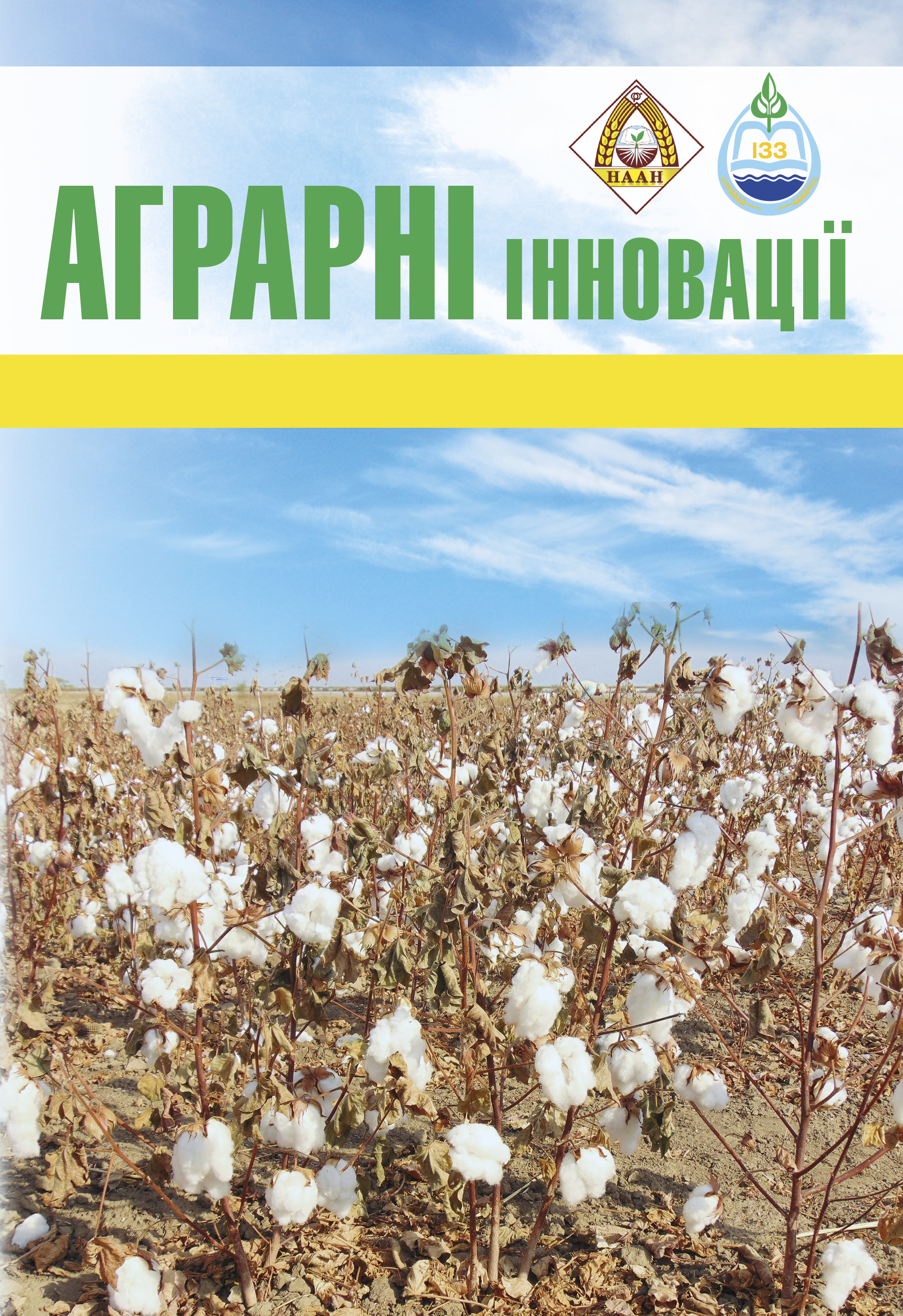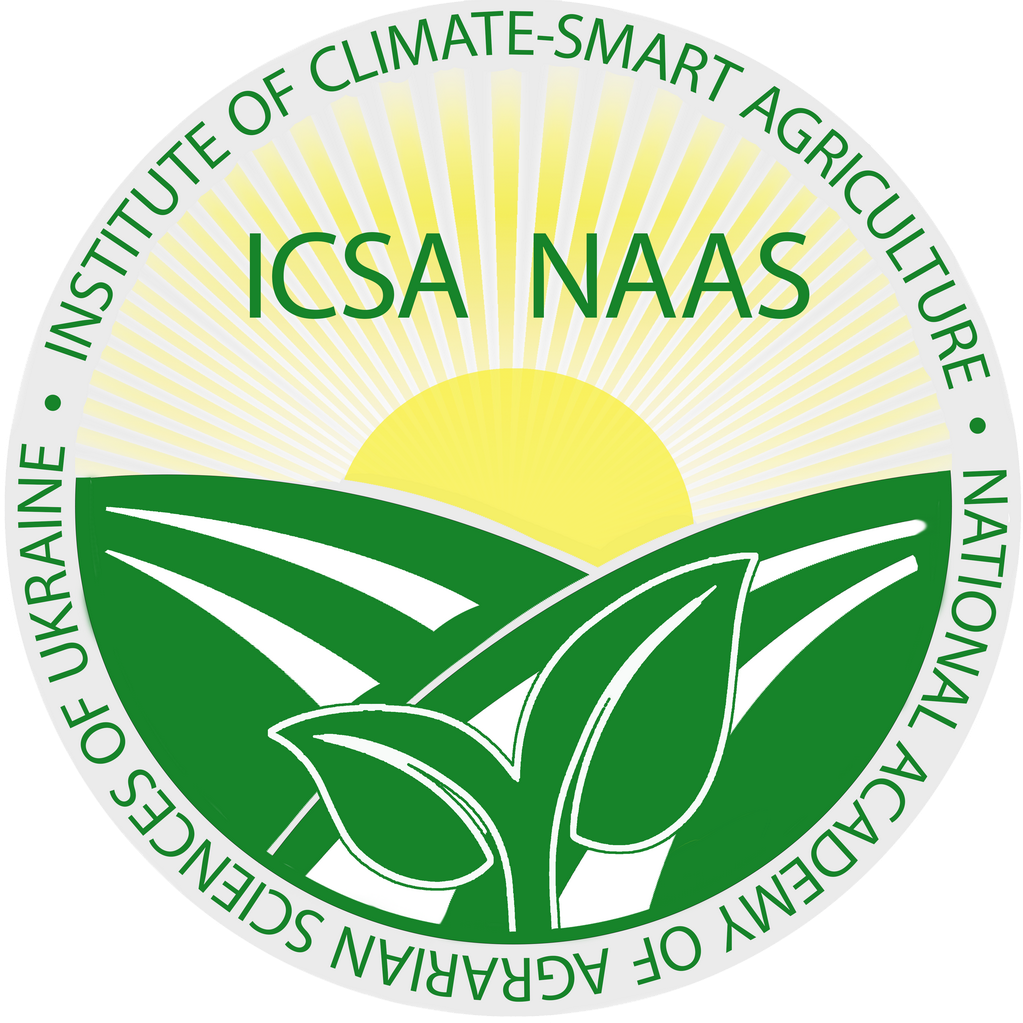Oilseed Radish Root Residues as an Additional Effective Component of Intermediate Green Manure Fertilization
Abstract
Objective. The purpose of the study was to investigate the development of the root system of oilseed radish (Raphanus sativus L. var. oleiformis Pers.) in terms of its biochemical profile and bio-organic potential as a fertilizing component on Grey Forest Soils.Methods. The research was conducted during 2014–2024 at the experimental field of Vinnytsia National Agrarian University on Grey Forest Soils with medium fertility poten- tial. The experiment was arranged in four replications with a systematic two-tier design. The study focused on the summer (intermediate) green manure variant, assessing the biopro- ductivity of root system formation and the complete biochemi- cal composition of the root biomass.Results. The study examined the levels of bioproductivity in oilseed radish root biomass formation over an eleven-year period under unstable atmospheric moisture conditions and markedly variable temperature regimes. The average yield of dry root biomass was 1.19 t/ha, characterizing the crop as ahighly productive green manure species in terms of root resi- due accumulation during summer sowing.Biochemical composition analysis identified the root mass as having high fertilizing potential and slow decomposition rates. The long-term average agrochemical potential of the root biomass was estimated at 45–65 kg/ha of nitrogen, up to 7.0 kg/ha of phosphorus, up to 40 kg/ha of potassium, up to 5.6 kg/ha of calcium, and up to 11 kg/ha of sulfur. The root biomass demonstrated a high biofumigation potential, with glucosinolate accumulation reaching up to 20.76 mol/ha.The decomposition dynamics of oilseed radish root resi- dues were found to be optimized, facilitating the gradual incor- poration of aboveground biomass into the soil during green manure-related agrotechnical operations.Conclusions. It has been shown that oil radish root resi- dues are an additional and important component of the overall potential of green manure bioproductivity on gray forest soils, especially in comparison with other cruciferous green manure crops. Root residues increase the overall green manure potential of oil radish by 11% in terms of nitrogen, 5.8% in terms of phosphorus, 18.5% in terms of potassium, 5.9% in terms of calcium, and 19.6% in terms of sulfur. In addition, the potential for biofumigation increases by at least 11.7% due to the normalization of the decomposition rate of plant biomass in the soil and the slowdown of mineralization with a coeffi- cient of 1.17. This ultimately creates favorable conditions for the absorption of nutrients by the soil absorption complex and successful soil nutrition of the plants following green manure.
References
2. Deus T.R.V. de, Giongo V., Salviano A. M., Santana M. da S., Silva V.C., da Santos, T.C. dos. Selection of green manures to provide ecosystem services in a semi-arid environment. Revista Brasileira de Ciências Ambientais. 2022. Vol. 57. №3. P. 409–421.
3. Kucerik J., Brtnicky M., Mustafa A., Hammerschmiedt T., Kintl A., Sobotkova J., Alamri S., Baltazar T., Latal O., Naveed M., Malicek O., Holatko J. Utilization of Diversified Cover Crops as Green Manure-Enhanced Soil Organic Carbon, Nutrient Transformation, Microbial Activity, and Maize Growth. Agronomy. 2024. Vol. 14. №9. 2001.
4. Lei B., Wang J., Yao H. Ecological and Environmental Benefits of Planting Green Manure in Paddy Fields. Agriculture. 2022. Vol. 12. №2ю 223.
5. Li P., Jia L., Chen Q., Zhang H., Deng J., Lu J., Xu L., Li H., Hu F., Jiao J. Adaptive evaluation for agricultural sustainability of different fertilizer management options for a green manure-maize rotation system: Impacts on crop yield, soil biochemical properties and organic carbon fractions. Science of The Total Environment. 2024. Vol. 908, 168170.
6. Ma D., Yin L., Ju W., Li X., Liu X., Deng X., Wang S. Meta-analysis of green manure effects on soil properties and crop yield in northern China. Field Crops Research. 2021. Vol. 266. 108146.
7. Pandey A., Kumar K. The Role of Green Manure in Soil Conservation. Vigyan Varta. 2024. Vol. 5. №8. P. 236–241.
8. Patra A., Singh R.P., Kundu M.S., Kumar G., Malkani P., Singh B.K., Choudhury S., Kundu A., Mukherjee S. Green Manuring: A Sustainable Approach for Soil Health Improvement. Agriculture & Food E‐Newsletter. 2023. Vol. 05. № 04. P. 198–201.
9. Pimentel M.L., Reis I.M.S., Romano M.L.P.C., de Castro J.S., Vildoso C.I.A., Gasparin E., Sia E.F. de, de Sousa L.S. Green manure, a sustainable strategy to improve soil quality: A case study in an oxisol from Northern Brazil. Australian Journal of Crop Science. 2023. Vol. 17. №6. P. 488–497.
10. Rosenfeld A., Rayns F. Green manures – implications of economic and environmental benefits on rotational management. AHDB Factsheet. 2010. 26/10, 20 pp.
11. Talgre L. Biomass production of different green manure crops and their effect on the succeeding crops yield A Thesis for applying for the degree of Doctor of Philosophy in Plant Production. Tartu. Estonian University of Life Sciences. 2013. 164 pp.
12. Gentsch N., Riechers F., Boy J., Schwenecker D., Feuerstein U., Heuermann D., Guggenberger G. Cover crops improve soil structure and change organic carbon distribution in macroaggregate fractions. Soil. 2024. Vol. 10. P. 139–150.
13. Pimentel M.L., Reis I.M.S., Romano M.L.P.C., de Castro J.S., Vildoso C.I.A., Gasparin E., Sia E.F. de, de Sousa L.S. Green manure, a sustainable strategy to improve soil quality: A case study in an oxisol from Northern Brazil. Australian Journal of Crop Science. 2023. Vol. 17. №6. P. 488–497.
14. Tsytsiura Y. Potential of oilseed radish (Raphanus sativus l. var. oleiformis Pers.) as a multi-service cover crop (MSCC). Agronomy Research. 2024. Vol. 22. №2. P. 1026–1070.
15. Tsytsiura Y. Evaluation of Ecological Adaptability of Oilseed Radish (Raphanus sativus L. var. oleiformis Pers.) Biopotential Realization in the System of Criteria for Multi-Service Cover Crop. Journal of Ecological Engineering. 2024. Vol. 25. Iss. 7. Р. 265–285.
16. Test Guidelines for the conduct of tests for distinctness. uniformity and stability of Fodder Radish (Raphanus sativus L. var. oleiformis Pers.). International union for the protection of new varieties of plants. UPOV. Geneva, 2017. 23 p.
17. Bodner G., Alsalem M., Nakhforoosh A. Root System Phenotying of Soil-Grown Plants via RGB and Hyperspectral Imaging. Methods in Molecular Biology. 2021. Issue 2264. P. 245–268.
18. Bublitz T.A., Kemper R., Müller P., Kautz T., Döring T.F., Athmann M. Relating Profile Wall Root-Length Density Estimates to Monolith Root-Length Density Measurements of Cover Crops. Agronomy. 2022. Vol. 12. 48.
19. Undersander D., Mertens D.R., Thiex N. Forage analyses. Procedures. National Forage Testing Association. 1993. 139 p.
20. Kemper R. Root growth of sole and mixed cover crops in organic farming. Dissertation for the attainment of the degree Doctor of Agricultural Sciences. Institute of Crop Science and Resource Conservation. Department of Agroecology and Organic Farming. Bonn. 2024. 195 p.
21. Цицюра Я.Г. Особливості формування кореневої системи та кореневої біомаси редьки олійної залежно від агротехнологічних параметрів конструювання її ценозу. Аграрні інновації. 2024. № 24. С. 151–159.
22. Guinet M., Voisin A-S., Nicolardot B. Potential C and N Mineralisation of Shoot and Root Residues from Ten Grain Legume Species As Related to their Biochemical Characteristics. World Journal of Agriculture and Soil Science, 2023. Vol. 8. №4. WJASS.MS.ID.000691.
23. Louvieaux J., Leclercq A., Haelterman L., Hermans C. In-Field Observation of Root Growth and Nitrogen Uptake Efficiency of Winter Oilseed Rape. Agronomy. 2020. Vol. 10. №1. 105.
24. Lopez G., Ahmadi S.H., Amelung W., Athmann M., Ewert F., Gaiser T., Gocke M.I., Kautz T., Postma J., Rachmilevitch S., Schaaf G., Schnepf A., Stoschus A., Watt M., Yu P., Seidel, S.J. Nutrient deficiency effects on root architecture and root-to-shoot ratio in arable crops. Frontiers in Plant Science. 2023. Vol. 13. 1067498.
25. Li P., Jia L., Chen Q., Zhang H., Deng J., Lu J., Xu L., Li H., Hu F., Jiao J. Adaptive evaluation for agricultural sustainability of different fertilizer management options for a green manure-maize rotation system: Impacts on crop yield, soil biochemical properties and organic carbon fractions. Science of The Total Environment. 2024. Vol. 908. 168170.
26. Kätterer T,, Bolinder M.A., Andrén O., Kirchmann H., Menichetti L. Roots contribute more to refractory soil organic matter than aboveground crop residues, as revealed by a long-term feld experiment. Agriculture, Ecosystems & Environment. 2011. Vol. 141. P. 184–192.
27. Xu J., Si L., Zhang X., Cao K., Wang J. Various green manure-fertilizer combinations affect the soil microbial community and function in immature red soil. Frontiers in Microbiology. 2023. Vol. 14. 1255056.
28. Vogel S., Bönecke E., Kling C., Kramer E., Lück K., Nagel A., Philipp G., Rühlmann J., Schröter I., Gebbers R. Base Neutralizing Capacity of Agricultural Soils in a Quaternary Landscape of North-East Germany and Its Relationship to Best Management Practices in Lime Requirement Determination. Agronomy. 2020. Vol. 10. №6. 877.
29. Abdulraheem M.I., Tobe O.K. Green manure for agricultural sustainability and improvement of soil fertility. Farming & Management. 2022. Vol. 7. P. 1–8.
30. Duff J., van Sprang C., O’Halloran J., Hall Z. Guide to Brassica Biofumigant Cover Crops Managing soilborne diseases in vegetable production systems. Horticulture Innovation through VG16068 Optimising cover cropping for the Australian vegetable industry. State of Queensland. Department of Agriculture and Fisheries. 2020. 40 p.

This work is licensed under a Creative Commons Attribution 4.0 International License.






